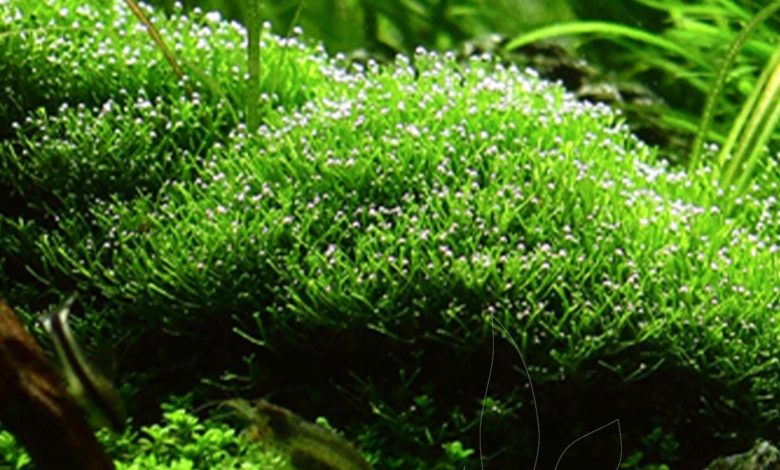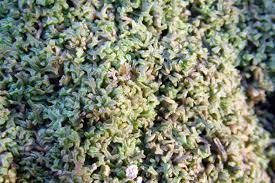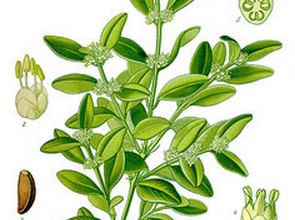Riccia Fluitans Plant: [Care, Cultivation, Characteristics and Needs]

Riccia Fluitans is one of our favorite plants to add to an aquarium, pond or enclosure.
 It has a very lively, mossy appearance that helps bring out the color and beauty of any tank.
It has a very lively, mossy appearance that helps bring out the color and beauty of any tank.
Most hobbyists, like us, use riccia fluitans as a floating or carpet plant. This plant is an excellent alternative to mosses such as Java moss.
The fact that it does not require an expert level of care is one of the many reasons why it is popular today.
Characteristics of Riccia Fluitans
- Scientific name: Riccia fluitans.
- Common name: Riccia fluitans.
- Difficulty: Easy.
- CO2 requirements: Moderate.
- Lighting Requirements: Moderate.
- High Layout of the plant: Medium depth.
- Growth rate: Fast.
- Family: Ricciaceae.
- Genre: Riccia.
- Origin: All over the world.
- Plant type: Aquatic.
- Water hardness: Medium (GH = 9-13 dH).
 The Riccia Fluitans, is a floating or aquatic plant that can be found all over the world.
The Riccia Fluitans, is a floating or aquatic plant that can be found all over the world.
It belongs to the Ricciaceae family and was popularized by the famous Japanese aquarist Takashi Amano.
Although it had already been discovered and cataloged by Linnaeus in 1753, Takashi was the first to keep it submerged in one of his tanks.
There are actually four different varieties of this species that come from Thailand, Singapore, Europe and Japan. However, only the variety that comes from Japan can thrive fully submerged.
How does this aquatic plant grow?
Riccia Fluitans usually grows in thick clumps of short, deep green threads.
These threads appear to be clumped together and grow into a ball shape if left untrimmed. Like moss, glass grass does not have a true root structure, but can become anchored to other surfaces over time.
To prevent it from floating, many hobbyists tie the plant down with fishing line or fine thread. Within a week or two, the new growth will support the plant on its own. At this point, the thread can be cut or just left there.
The fullness and thickness of the Riccia Fluitans will hide any unwanted threads. In the end, it will lean aesthetically towards the look of a beautiful cultivated lawn or a rich bed of moss.
How do we prepare the land and water for Riccia Fluitans?
 Riccia Fluitans does not require very specific water conditions.
Riccia Fluitans does not require very specific water conditions.
In fact, water can be anywhere from very soft to very hard.
The AP value requirements also allow some flexibility, as they can range from 6.0 to 8.0. This is a particular trait that makes it easy for many different species of fish to live alongside such a plant.
Where to plant a Riccia Fluitans?
The Riccia Fluitans is an aquatic plant.
Taking this into account, it should always be placed in an enclosure that has a sufficient amount of water.
Hobbyists often let the plant float freely and grow without issue. However, there are those who prefer to fix it to surfaces such as rocks, logs or driftwood. This allows to obtain a very interesting and diverse aquatic landscape.
Glass Grass (as Riccia Fluitans is also known) can even be attached to mesh to create a carpet or wall look that hides unattractive tank equipment.
The rapid growth of the plant makes it perfect for this type of project, but it does require some regular pruning.
What substrate do you need?
 Unlike many other plants, Riccia Fluitans does not extract nutrients through a typical root system.
Unlike many other plants, Riccia Fluitans does not extract nutrients through a typical root system.
Instead, it absorbs whatever food source it needs through its leaves and vapors.
For this reason, Riccia Fluitans does not really require any specific substrate to survive. In fact, it can easily thrive without any kind of substrate, just floating freely.
As long as there is clean, rich water flowing, the plant will be fine.
What light needs does Riccia Fluitans have?
The lighting needs of the Riccia Fluitans vary depending on where it is located in the aquarium.
If the plant is left floating, it won’t need much light and will be able to grow in fairly low conditions.
Exposure to higher levels of carbon dioxide will compensate for the lack of light.
On the other hand, the deeper in the water this plant is, the more light it will require.
Tufts that have clung to surfaces all the way to the bottom of a tank will need a lot of light to reach their full potential. Lack of adequate lighting can cause the plant to begin to darken and die at different points.
How to grow your Riccia Fluitans?
As already mentioned, Riccia Fluitans is a very fast growing plant. It can tolerate a wide variety of conditions and still manage to breed consistently.
The most efficient and practical way to grow riccia fluitans is to divide the mother plant into smaller pieces.
These pieces can be tied to a stone or mesh or simply floated.
Once this is done, the plant will begin to regenerate and grow. Although both methods work well, it has been reported that it will grow exponentially faster if left to float.
Is it necessary to water this aquatic plant?
Since Riccia Fluitans is usually grown fully or partially submerged in water, it doesn’t really need any watering.
What care does Riccia Fluitans need?
This plant likes a high nutrient supply of nitrate, phosphate, iron, and potassium.
It will also benefit from the addition of liquid fertilizers and CO2, especially if kept at the bottom of the tank.
Another thing to watch out for is annoying algae growth. Riccia Fluitans tends to be very dense, which can collect a lot of debris and promote algae growth.
Making sure there is a slow but steady stream of water can help alleviate this problem. Regular water changes will also help ensure the plant stays healthy and growing.

![Photo of 25 Fast Growing Plants: [Types, Characteristics and Images]](https://www.complete-gardening.com/wp-content/uploads/2022/08/25-fast-growing-plants-types-characteristics-and-images-390x220.jpg)
![Photo of Calateas: [Cultivation, Irrigation, Care, Pests and Diseases]](https://www.complete-gardening.com/wp-content/uploads/2021/06/Calateas-390x220.jpg)
![Photo of Weevil: [Characteristics, Detection, Effects and Treatment]](https://www.complete-gardening.com/wp-content/uploads/2021/06/Que-es-el-picudo-390x220.jpg)
